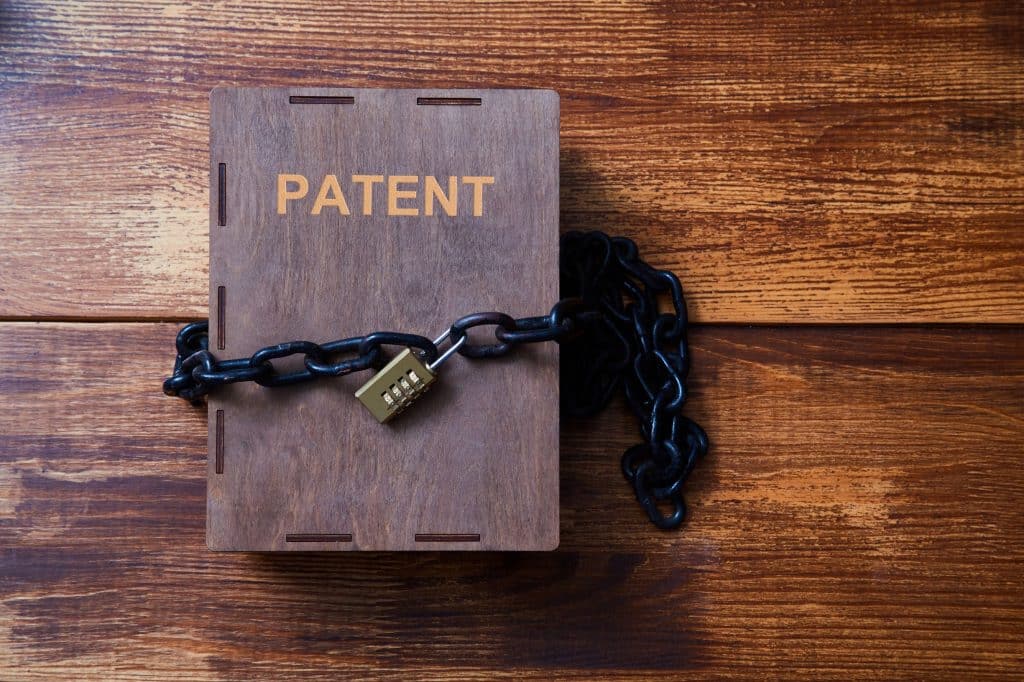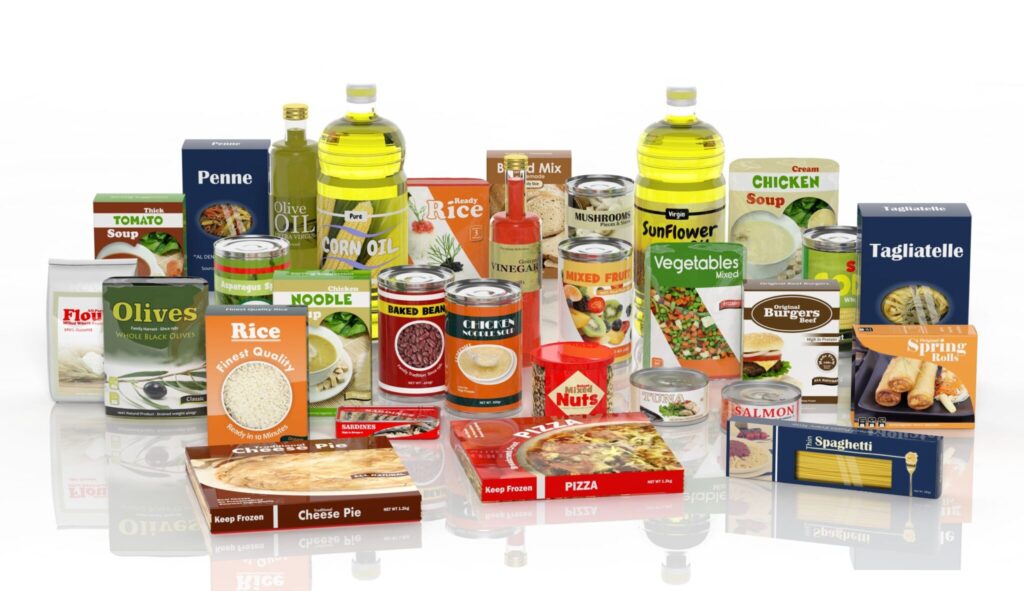What Does 'Infringement of Patent Rights' Refer to?

The patent system is a scheme in which the government grants a right, known as a patent right, to those who have made inventions that contribute to industrial development. This right allows the inventor to exclusively implement their invention in exchange for making it public. However, there are instances where this right can be infringed upon.
This is commonly referred to as patent infringement. But what exactly constitutes patent infringement, and what specific situations can be considered as such?
What is Patent Infringement?
“Patent infringement” refers to the act of implementing an invention (patented invention) that falls within the “technical scope” of a granted patent, by a party who does not have the legitimate authority to do so, in the course of business.
Implementing an Invention
An invention can be classified into an invention of a product (including programs), an invention of a method, or an invention of a method of producing a product. “Implementation” refers to:
- In the case of an invention of a product, the act of producing, using, transferring, exporting or importing the product, or offering it for transfer.
- In the case of an invention of a method, the act of using the method.
- In the case of an invention of a method of producing a product, in addition to the act of using the method, the act of using, transferring, exporting or importing the product produced by the method, or offering it for transfer.
However, patent infringement occurs when the invention is implemented in the course of business. Therefore,
- Implementing an invention for testing or research purposes
- Implementing an invention for personal or household use
do not constitute patent infringement.
Technical Scope of a Patent
In determining whether there is an infringement of a patent right, it is necessary to determine the technical scope within which the patented invention is protected. If the scope of protection of the patented invention is unclear, third parties will not be able to predict what actions would constitute an infringement of the patent right, which could stifle free invention and industrial development.
Therefore, the Japanese Patent Law stipulates the technical scope of a patented invention as follows:
Article 70 of the Japanese Patent Law (Technical Scope of a Patented Invention)
The technical scope of a patented invention must be determined based on the description of the scope of the patent claim attached to the application.
In the case of the preceding paragraph, the significance of the terms described in the scope of the patent claim shall be interpreted by taking into account the description and drawings attached to the application.
as stipulated.
Determining Patent Infringement

The “scope of protection of the patented invention” that determines patent infringement is defined based on the “scope of patent claims” (referred to as “claims”) attached to the application submitted to the Patent Office when applying for a patent. The principle is that it is limited by the wording described there.
Scope of Patent Claims
When applying for patent registration, the applicant must submit the following five documents to the Patent Office:
- Application form
- Scope of patent claims
- Specification
- Drawings
- Abstract
Among the five documents above, the most important document in determining the technical scope of the patented invention is the scope of the patent claims. This is because the entire content of the invention is described in the scope of the patent claims.
In order for a patent infringement to be established, it is necessary to satisfy all the constituent elements described in the scope of the patent claims. If the infringement mode lacks even a part of the constituent requirements of the patented invention, a patent infringement (direct infringement) will not be established. Whether the target product constitutes a patent infringement is determined by the interpretation of the wording (referred to as “wording infringement”). In patent infringement, this wording infringement is the principle.
Specifically, in considering whether or not it constitutes a patent infringement,
- Decompose the scope of the patent claims into technical elements (constituent elements)
- Decompose the product suspected of patent infringement in the same way as 1
- Compare the constituent elements of 1 and 2
It will be judged in this flow.
Specifications and Drawings
In determining patent infringement, the “scope of patent claims” is the main focus, but application documents such as specifications and drawings also affect it.
Since the technical scope of the patent is determined based on the description in the scope of the patent claims, matters not described in the “scope of patent claims” and only described in the specifications and drawings become technology that anyone can freely use.
However, for example, if the definition of the terms used in the “scope of patent claims” is described in the specifications and drawings, the definition in the specifications and drawings will be referred to in determining patent infringement. Therefore, although the “scope of patent claims” is the most important document in determining patent infringement, there may be cases where other application documents such as specifications and drawings are also checked.
Contents of Application Progress
It is rare for the application for patent registration to proceed smoothly from application to registration. In many cases, you will receive a notice of reasons for refusal from the examiner of the Patent Office, saying, “This is not good, so I can’t register.”
Even if you receive this notice of reasons for refusal, registration is not impossible, and the applicant can submit a rebuttal to overturn the reasons for refusal as an opinion. If this rebuttal is accepted, patent registration is possible.
The documents such as opinions submitted during the process from application to registration completion also affect the judgment of the technical scope. In actual litigation, the interpretation of constituent elements and the limitation of the technical scope are made based on the applicant’s claims during the application process, such as opinions.
Therefore, when determining the presence or absence of patent infringement, it is necessary to check the documents submitted during the examination process as well.
Based on the above judgment criteria, it will be determined whether there is no patent infringement. Then, if there is even one constituent element that does not match in both products, patent infringement will not be established as a principle.
Cases Where Patent Infringement Occurs Exceptionally

It is important to note that even if the components of both products do not match, there are exceptional cases where patent infringement can be established.
The exceptional cases where patent infringement can be established even if the components of both products do not match are:
- Equivalent infringement
- Indirect infringement
These are the two cases.
Equivalent Infringement
“Equivalent infringement” refers to the recognition of patent infringement under certain conditions, even if some components of both products do not match.
For example, if the components are almost the same, but a slight difference in the components is judged as not being a patent infringement, there is a possibility that patent infringement could become rampant.
It is considered unreasonable to deny the establishment of patent infringement even in such cases, and therefore, equivalent infringement is recognized as patent infringement.
The conditions for the establishment of equivalent infringement are:
- The different component is not essential in the patented invention
- Even if the component is replaced, the purpose of the patented invention can be achieved and the same effect can be produced
- A person with ordinary knowledge in the field of the patented invention can easily come up with the idea of replacing the component at the time of replacement
- The replaced component was not a publicly known technology at the time of the patent application
- The replaced component was not something that could be easily conceived at the time of the patent application
- There are no special circumstances (for example, if it was intentionally excluded from the “scope of patent claim” at the time of the patent application for the patented invention)
If all of the above conditions are met, even if there are parts where the components do not match, there is a possibility that patent infringement can be established exceptionally.
Indirect Infringement
“Indirect infringement” refers to the recognition of certain acts that are likely to induce patent infringement as patent infringement.
For example, making a part that constitutes a part of a patented invention does not constitute patent infringement (direct infringement). This is because producing a part that constitutes a part of a patented invention only matches a part of the components.
However, if the part is a dedicated part that is only used in a product that constitutes patent infringement, making that part has a very high risk of inducing patent infringement, and if there were no regulations, the patent holder would have to stand by even if patent infringement was likely to occur.
Therefore, some acts that are likely to induce patent infringement are recognized as indirect infringement, and the patented invention is protected.
The acts that are recognized as patent infringement as indirect infringement are:
- Production and transfer of dedicated goods
- Production and transfer of goods essential for solving problems by the invention
- Possession of patent infringing products for the purpose of transfer
These are the acts.
As such, even if it does not constitute direct infringement, there are cases where it can be exceptionally considered as patent infringement, such as equivalent infringement and indirect infringement. It is not the case that if all the components of the patented invention do not match, it will never be a patent infringement.
Patent Infringement Cases
Infringing on a patent can potentially result in damages amounting to billions of yen. Let’s take a look at some actual court cases.
The Kabi Killer Case
There was a case where it was disputed whether the manufacturing and selling of the household mold remover “Kabi Killer” by Johnson infringed on the patent rights of Kao Corporation’s “Aromatic Liquid Bleach Composition”.
Kao’s patent rights pertain to an aromatic liquid bleach composition that features the inclusion of one or more types of the numerous fragrances listed in the patent claim, with sodium hypochlorite as the active ingredient. Johnson disputed the infringement of patent rights, arguing that (1) their product includes fragrances not listed in the patent claim, and (2) the amount of fragrance listed in the patent claim included in their product is minuscule.
The court stated that in regards to (1),
“The phrase ‘includes’ as listed in the patent claim, in common language usage, means that it is necessary to include the said component, and that it is sufficient to meet the requirements of the patented invention. It does not mean to exclude cases where other components are included.”
Tokyo District Court, November 4, 1999 (1999)
And in regards to (2), whether the small amount of dimethylbenzyl carbinol included satisfies the requirements of the patented invention,
“Since the patent claim does not impose any numerical limit on the amount of fragrance to be included, it is reasonable to interpret that if the fragrance listed is included, regardless of the amount, it satisfies the requirements of the patented invention.”
Same as above
Based on the scope of the patent claim, the court recognized the infringement of patent rights (direct infringement) and ordered the payment of approximately 270 million yen in damages.
The Cut Mochi Lawsuit
There was a case where Echigo Confectionery, the second largest company in the industry, sued Sato Foods, the industry leader, over a patent for cutting mochi. This case was introduced in another article on this site, “The Merits of Patents and Patent Acquisition as Explained by a Lawyer”.
Echigo Confectionery applied for a patent in October 2002 (Heisei 14) for a technique that prevents the surface from breaking when the mochi swells by baking, by making longitudinal (horizontal) cuts on the side of the cut mochi. The patent was registered in April 2008 (Heisei 20).
On the other hand, Sato Foods also applied for and registered a patent for a product called “Sato’s Cut Mochi”, which has cuts not only on the sides but also on the top and bottom. The application was made 9 months later than Echigo Confectionery, in July 2003 (Heisei 15), but it was registered as a patent as early as November 2004 (Heisei 16).
Therefore, Echigo Confectionery claimed that “Sato’s Cut Mochi” infringed on their patent and demanded a halt to manufacturing and sales, as well as damages.
https://monolith.law/corporate/patent-merit-lawyer-invention[ja]
About the First Instance Judgment of the Cut Mochi Lawsuit
As mentioned earlier, the judgment of patent infringement is centered on the scope of the patent claim. Please read the following sentence in the scope of the patent claim submitted by Echigo Confectionery.
“…not on the bottom surface or flat top surface of the cut mochi, but on the vertical side surface of the upper surface of this small piece of mochi, …provide a cut or groove.”
This sentence seems to allow for two interpretations.
- Make cuts only on the sides, not on the top and bottom surfaces
- Just mean to make cuts on the sides
The Tokyo District Court in the first instance stated that Sato Foods’ patent claim includes “two cuts on each of the two longer sides and a cross-shaped cut on the top and bottom surfaces”, but Echigo Confectionery’s patent claim can be read as “make cuts only on the sides and not on the top and bottom surfaces”, and there is a technical feature in “not making cuts on the top and bottom surfaces”.
Therefore, Sato Foods’ product, which also makes cuts on the top and bottom surfaces, does not meet the requirements of Echigo Confectionery’s patent, and it was judged as “no infringement of wording”.
As a result, the first instance ruled that Sato Foods’ product did not infringe on the patent rights.
About the Appeal Judgment of the Cut Mochi Lawsuit
The Intellectual Property High Court, the appellate court, stated,
“Considering the sentence structure where ‘not on the bottom surface or flat top surface’ is directly followed by ‘on the vertical side surface of the upper surface of this small piece of mochi’, without a comma, it is natural to understand that the description ‘not on the bottom surface or flat top surface’ modifies ‘the vertical side surface of the upper surface of this small piece of mochi’ together with ‘the side surface’.”
Intellectual Property High Court, September 7, 2011 (2011) Interim Judgment
Recognizing the infringement of patent rights (direct infringement) by Sato Foods, the final judgment on March 22, 2012 (2012) ordered the disposal of cut mochi products and manufacturing equipment, and the payment of approximately 800 million yen in damages.
To summarize, if it is “not on the bottom surface or flat top surface of the cut mochi, but on the vertical side surface of the upper surface of this small piece of mochi”, it means “only make cuts on the sides”. However, since there is no comma, it means that there is a technical feature in “making cuts on the sides”, and even if cuts are made on the top and bottom surfaces, it doesn’t matter, and just by making cuts on the sides, it is judged as “infringement of wording”.
This is a good example of how important the interpretation of the scope of the patent claim and wording is in patent litigation.
Summary
Determining whether or not there is an infringement of patent rights is a very difficult and complex issue.
Given the significant risk of patent infringement, whether you suspect you may be infringing or being infringed upon, it is essential to consult with a lawyer who is knowledgeable in this area and take the most appropriate action according to the situation.





















